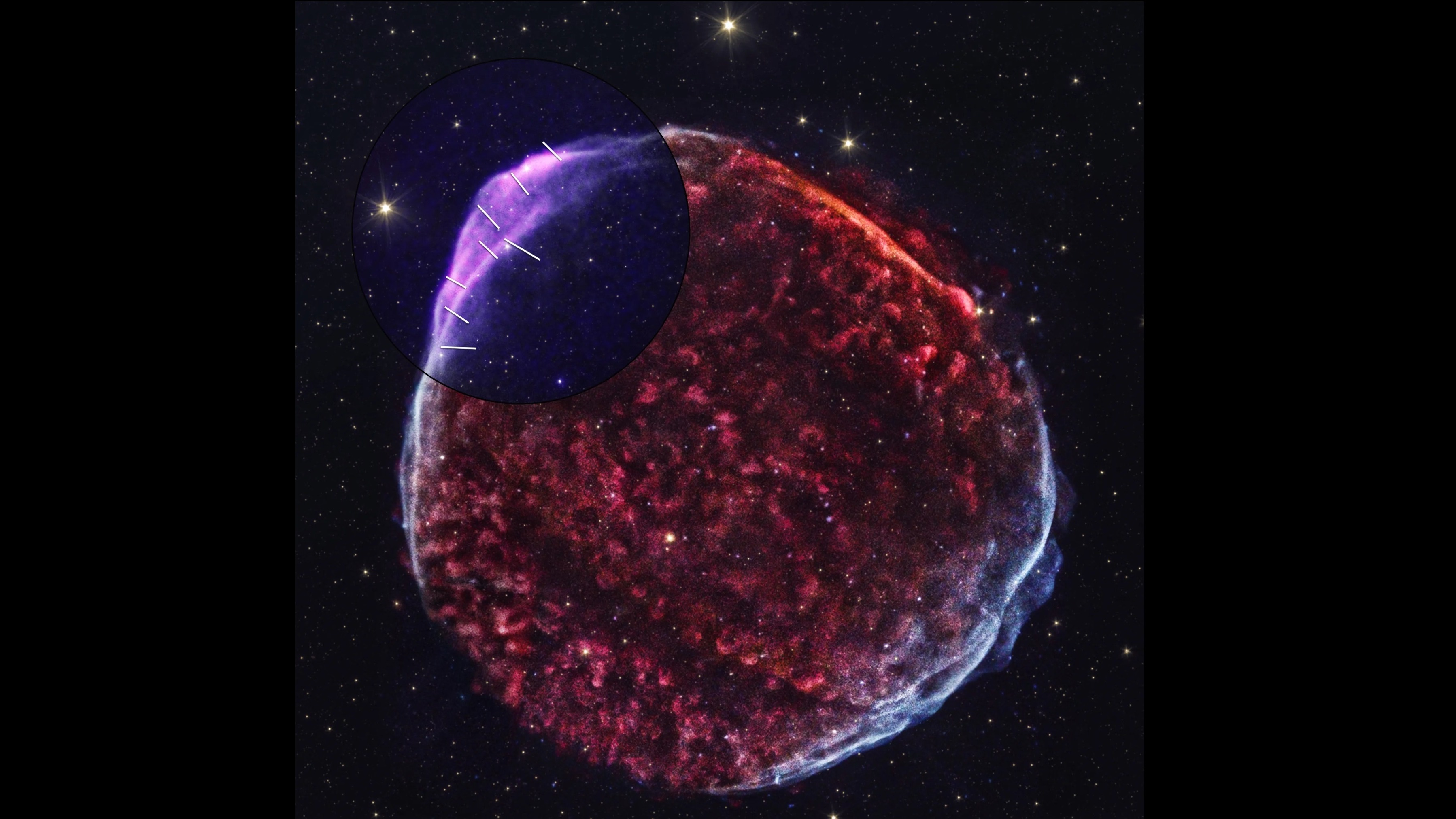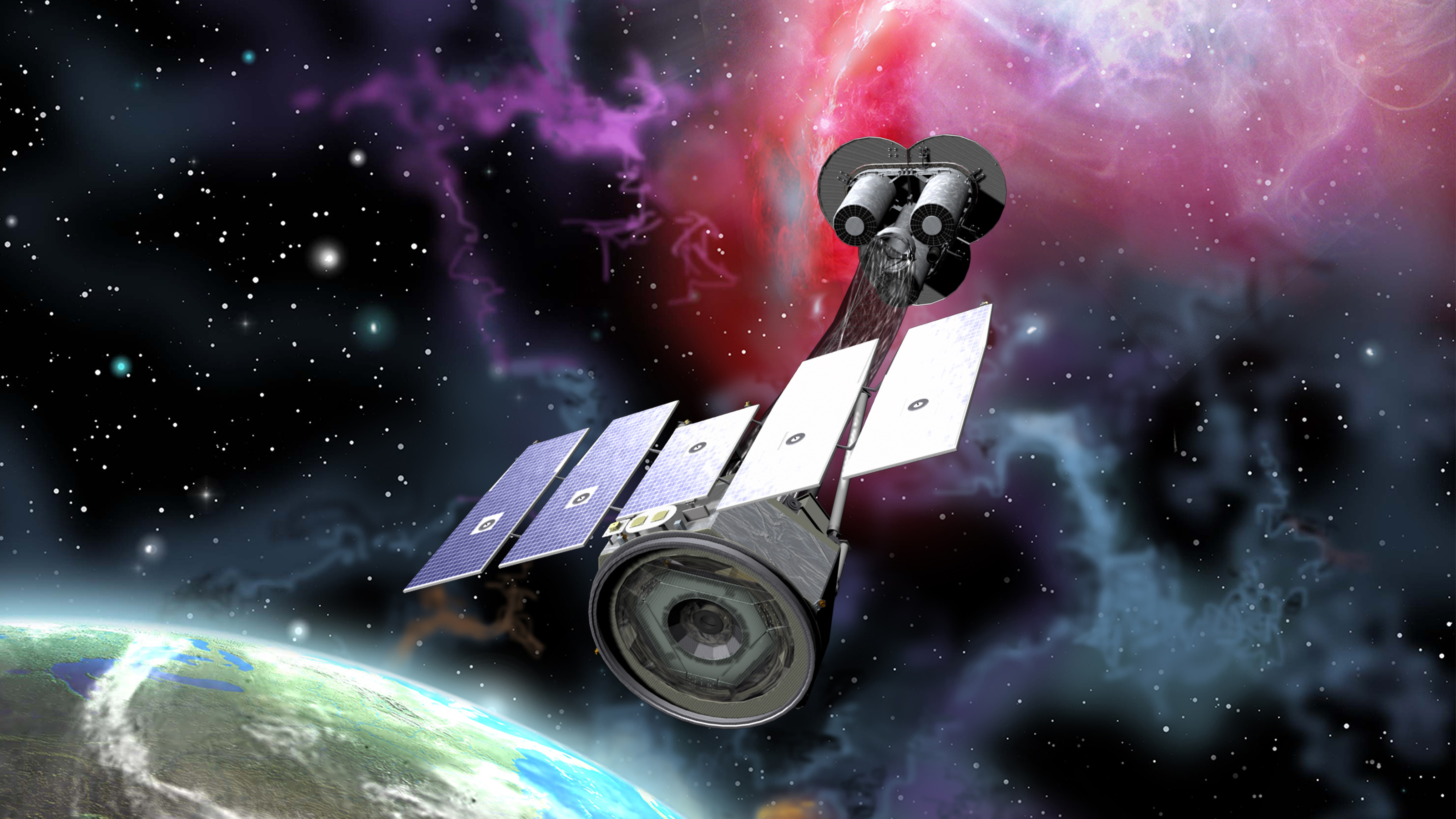
A new X-ray telescope showed how star explosion shockwaves align powerful magnetic fields able to accelerate atom fragments close to the speed of light.
The finding was revealed at the remnant of a supernova, or star explosion, called SN 1006. It was scrutinized by NASA's and the Italian Space Agency's Imaging X-ray Polarimetry Explorer (IXPE). The space telescope, which launched in December 2021, measured the supernova's high-energy X-rays.
The remnant is the remains of a type Ia supernova. This type produces explosions either when two white dwarfs or old star cores collide, or when a white dwarf accrued too much mass from a companion star.
Related: James Webb Space Telescope dives deep into the Crab Nebula supernova wreckage (video)
The explosion in 1006 that produced SN 1006 was witnessed in what the International Astronomical Union now calls the constellation of Lupus, the wolf. It was seen as far afield as the Arab world, as well as in locations that are now part of modern-day China, Europe and Japan.
The supernova is also believed to have been the brightest in recorded history. Located 6,500 light years away, the supernova was so bright it remained visible in the night sky to the unaided eye for three years, according to ancient records.
IXPE showed that the X-ray light is polarized — that is, the X-ray photons oscillate or vibrate in a preferred direction — by magnetic fields that are orientated in a certain way, within the expanding supernova's remnant of gas and dust.
"Now we can see that SN 1006's magnetic fields are turbulent, but also present an organized direction," lead researcher Ping Zhou, of Nanjing University in Jiangsu, China, said in an Oct. 26 NASA statement.
Related: Is the puzzling star Betelgeuse going to explode in our lifetime after all?

Understanding the order and orientation of magnetic fields in a supernova remnant is crucial because such remnants are believed to be the origin of at least some cosmic rays. These rays are charged particles such as protons, electrons and some ions that were accelerated to nearly the speed of light by intense magnetic fields in the supernova.
Many scientists suspect cosmic rays come from supernovas, but the rays' exact origins have been difficult to pin down. Past observations of SN 1006, NASA officials added in the statement, suggest supernova remnants like it may act as a particle accelerator, and that the surrounding nebula (or gas cloud) may be where cosmic rays originate.
IXPE's findings now suggest the magnetic fields in the supernova are aligned so that the fields are pointing away from the source of the supernova's explosion. Two other supernova remnants investigated by IXPE — which are Cassiopeia A (whose light likely reached Earth in the 1660s) and a supernova remnant spotted by Danish astronomer Tycho Brahe in 1572 — also display evidence for magnetic fields oriented radially outwards.
The X-rays from SN 1006, however, are significantly more polarized, providing much more compelling evidence for the magnetic field phenomenon than the other two supernovas considered in the study.
"The polarization properties obtained from our spectral-polarimetric analysis align remarkably well with outcomes from other methods and X-ray observatories," stated Yi-Jung Yang of the University of Hong Kong, who is a co-author of the research.
As the supernova shockwave propagates through the gas and dust surrounding the supernova, the study found, the magnetic fields become aligned with the direction of the shockwave. Charged particles are swept up by the shockwave, become trapped in the magnetic field lines, and are accelerated.
Those cosmic rays then travel through space, breaching the area of the sun's influence (the heliospheric bubble) around the solar system that is blown by the solar wind, or the charged particles that stream out from our sun.
The rays next arrive at Earth, where during the last leg of their journey they crash into atmospheric molecules. Each collision causes the molecule to shatter in an air shower of short-lived muons, which are "daughter particles" (decay products after a molecule disintegrates). The muons swiftly decay in a flash of light that is then picked up by cosmic ray detectors, capturing the echoes of stars that died centuries ago.
The findings were published Oct. 27 in The Astrophysical Journal.







